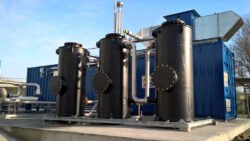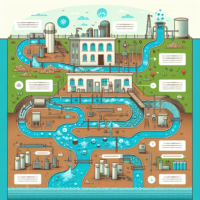Water Clarification Chemicals

The Role of Water Clarification Chemicals in Modern Water Treatment
Water is an essential resource, intrinsic not just for human survival but also for agriculture, industry, and ecosystems around the globe. The burgeoning global population and the increasing industrialization of developing nations have highlighted the urgent need for effective water treatment systems. In this context, water clarification chemicals play a pivotal role, ensuring water is clean, safe, and suitable for various uses. This article delves into the intricacies of water clarification chemicals, their types, mechanisms, applications, and challenges in the field.
Understanding Water Clarification
Water clarification is a process mainly aimed at removing suspended solids from water. These could be organic materials like algae and bacteria or inorganic contaminants such as silt and minerals. The outcome is clearer water with reduced turbidity, which improves both the aesthetic and practical qualities of the water, making it suitable for diverse applications ranging from potable water supplies to industrial uses.
The Importance of Water Clarification
Water clarity is often synonymous with water quality. Suspended solids can interfere with disinfection processes, may harbor harmful microorganisms, and reduce the effectiveness of chemical treatments. In industrial contexts, unclear water can cause scaling, corrosion, and fouling in machinery, leading to costly repairs and downtimes. Thus, water clarification is both a public health and economic imperative.
Types of Water Clarification Chemicals
Water clarification chemicals can be broadly categorized into coagulants, flocculants, and other auxiliary agents. Understanding the differences and functions of each category is crucial for selecting the right chemical for a specific water treatment scenario.
Coagulants
Coagulants are chemicals that, upon addition to water, result in the neutralization of charges present on suspended particles. The primary function of coagulants is to reduce the repulsion between these particles, allowing them to collide and form larger aggregates known as flocs.
1. Aluminum-Based Coagulants
-
- Aluminum Sulfate (Alum): Alum is one of the most commonly used coagulants in water treatment. It is effective for removing turbidity and has a broad range of application pH.
-
- Polyaluminum Chloride (PAC): This is a pre-polymerized coagulant that offers better coagulation over a wider pH range and is less sensitive to temperature changes compared to traditional alum.
2. Iron-Based Coagulants
-
- Ferric Chloride: It is often used in wastewater treatment and is effective in eliminating a broad spectrum of impurities.
-
- Ferric Sulfate: Similar to ferric chloride, it enhances coagulation reactions and is particularly well-suited for high-temperature applications.
3. Synthetic Organic Polymers
-
- PolyDADMAC (Poly Diallyldimethylammonium Chloride): A cationic polymer that interacts well with negatively charged particles, providing effective coagulation.
Flocculants
Flocculants are chemicals that promote the aggregation or coalescence of fine particles into larger flocs after the initial coagulation process.
1. Anionic Flocculants
-
- These are often utilized when dealing with positively charged particles, as the anionic charges on the polymer backbone attract and bind the particles together.
2. Cationic Flocculants
-
- These polymers carry positive charges, making them suitable for bonding negatively charged particles. They are often used alongside anionic flocculants in a dual-flocculant system to improve effectiveness.
3. Non-Ionic Flocculants
-
- Non-ionic flocculants are neutral polymers that form hydrogen bonds with suspended particles, aiding in floc formation when ionic forces are less effective.
Auxiliary Agents
Apart from the primary coagulants and flocculants, there are other chemicals that aid in water clarification.
1. pH Adjusters
-
- Agents such as lime or sulfuric acid are used to optimize pH levels, ensuring the maximum efficacy of the coagulants and flocculants used.
2. Antifoaming Agents
-
- Foaming can occur as a consequence of chemical dosing; thus, antifoaming agents are added to control and dissipate foam, which can interfere with water treatment processes.
3. Coagulant Aids
-
- These include various clays or activated silicas that enhance the efficiency and effectiveness of the primary coagulant by providing additional surfaces for floc formation.
Mechanisms of Water Clarification
The mechanisms underlying the action of water clarification chemicals depend on both the properties of the chemicals and the characteristics of the water being treated.
Charge Neutralization
Since most suspended particles in water are negatively charged, the addition of positively charged coagulants leads to charge neutralization, reducing inter-particle repulsive forces and leading to particle aggregation.
Bridging
Flocculants, particularly high molecular weight polymers, can encourage particles to form bridges between chain segments, accelerating the development of larger and more stable flocs.
Sweep Flocculation
In certain cases, coagulants form precipitates that themselves act as absorbents, sweeping up other suspended particles as they settle. This is especially effective in waters that require bulk solid removal.
Precipitation and Adsorption
Some water clarification chemicals function by changing ion concentrations, leading to precipitation of solutes. Additionally, adsorption onto coagulants or flocculants helps in trapping dissolved organic compounds.
Applications of Water Clarification Chemicals
Water clarification chemicals have extensive applications across various fields due to their efficiency and versatility.
Potable Water Treatment
The safety of drinking water is a critical public health concern, making water clarification chemicals invaluable in municipal treatment plants. They are employed to remove pathogens, reduce turbidity, and improve taste and odor, ensuring compliance with health standards such as those set by WHO and the EPA.
Wastewater Treatment
Effluent from industrial processes often contains suspended solids, heavy metals, and organic pollutants. Water clarification chemicals aid in the removal of these contaminants, making treated wastewater suitable for reuse or discharge into the environment.
Industrial Water Treatment
Industries ranging from textiles to pharmaceuticals require process water free from impurities that could affect production quality or damage equipment. Water clarification chemicals ensure high purity water for cooling systems, boilers, and other industrial applications.
Agricultural Applications
In agriculture, irrigation water devoid of sediments is crucial for crop health and growth. Clarification chemicals remove suspended solids, preventing them from clogging irrigation systems and affecting soil quality.
Mining and Construction
Both sectors involve the usage of enormous volumes of water prone to contamination with fine particulates and chemicals. Water clarification chemicals help in reducing turbidity and reclaiming water for reuse in dust suppression, mineral processing, and other activities.
Challenges and Considerations
Despite the proven advantages, the use of water clarification chemicals does not come without challenges and considerations that must be addressed.
Environmental and Health Impacts
The residuals of certain chemicals, especially aluminum and iron-based coagulants, can pose harmful effects on aquatic life and human health if present above acceptable levels. Therefore, optimal dosing and thorough monitoring of water quality post-treatment are necessary.
Sludge Disposal
The aggregation of particles leads to sludge generation, which requires careful handling and disposal. The improper management of sludge can lead to environmental contamination or increased water treatment costs.
Cost-Effectiveness
Balancing treatment efficacy with cost is critical, as the overuse of chemicals can lead to economic inefficiencies. The cost-effectiveness of treatment is influenced by factors like chemical type, dosing strategy, and the initial quality of the water.
Alternative Treatment Methods
In recent years, interest has grown in non-chemical alternative methods like membrane filtration, biological treatments, and advanced oxidation processes. These innovative approaches, while potentially effective, may not always provide the same level of reliability or cost-effectiveness as chemical treatments under certain circumstances.
Regulatory Compliance
Water treatment must comply with local, national, and international regulations regarding water quality and chemical usage. Treatment facilities must stay abreast of evolving legal frameworks and technological advancements to maintain compliance and ensure the sustainability of their operations.
Future Perspectives
The future of water clarification chemicals lies in innovations aimed at improving efficiency, sustainability, and ecological safety. Researchers are exploring biodegradable polymers and natural coagulants as eco-friendlier alternatives to traditional chemicals. New formulations that combine different chemical types or incorporate nanotechnology may offer enhanced performance under a wider range of conditions.
Emerging technologies such as real-time monitoring and automated dosing systems hold promise for optimizing chemical use, enhancing the precision of water treatment, and reducing waste. As environmental pressures and regulatory standards become more stringent, the water treatment industry is poised for significant evolution, where water clarification chemicals will continue to play a central role.
Conclusion
The critical role of water clarification chemicals in ensuring clean, safe water across myriad applications cannot be overstated. From addressing public health concerns to optimizing industrial processes, these chemicals form the backbone of modern water treatment technologies. Addressing the challenges associated with their use requires a balanced approach, embracing innovation while ensuring environmental responsibility and regulatory compliance. As humanity continues to grapple with water scarcity and quality issues, the importance of water clarification chemicals is set to increase, marking them as indispensable tools in the quest for sustainable water management.


